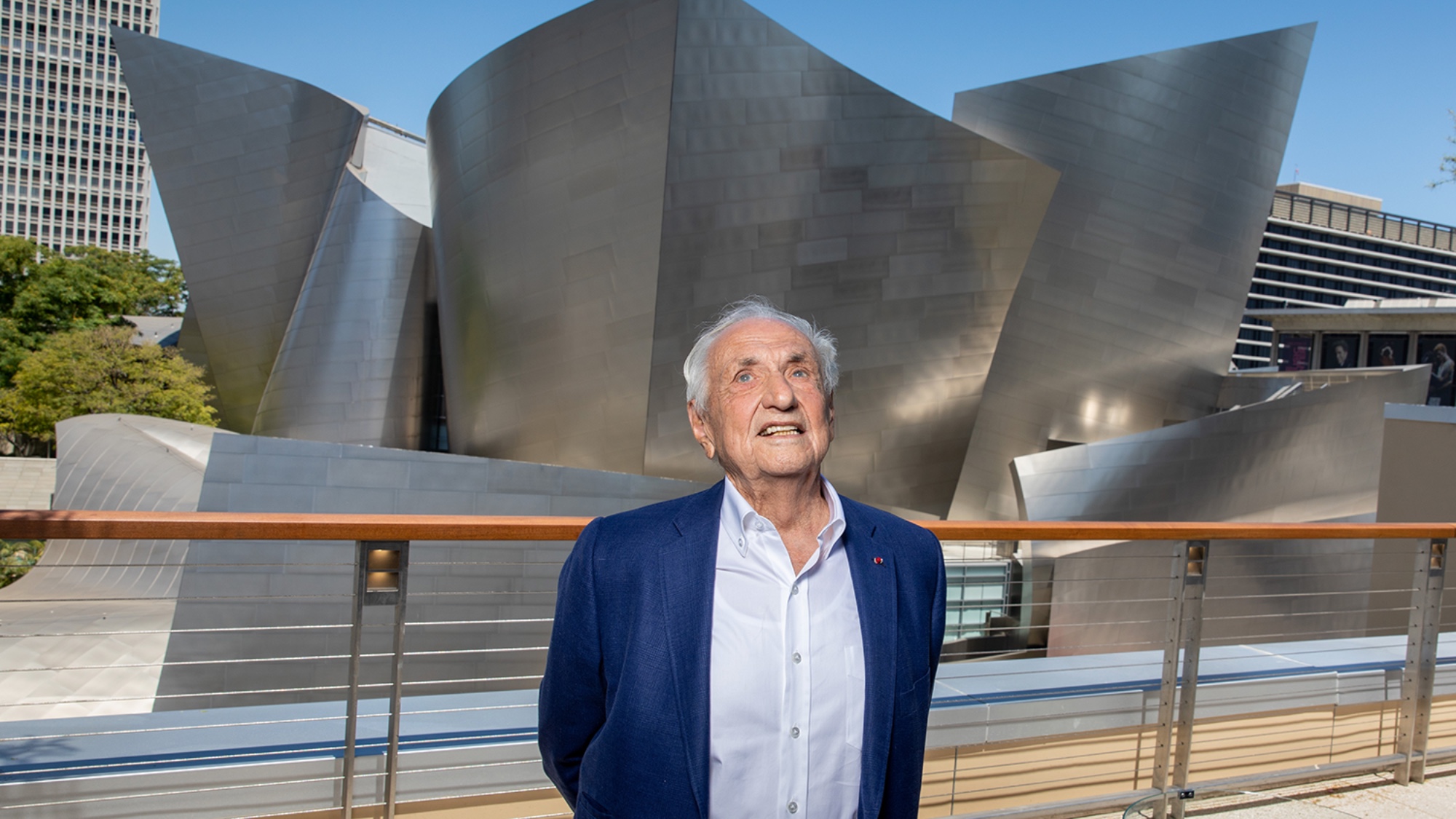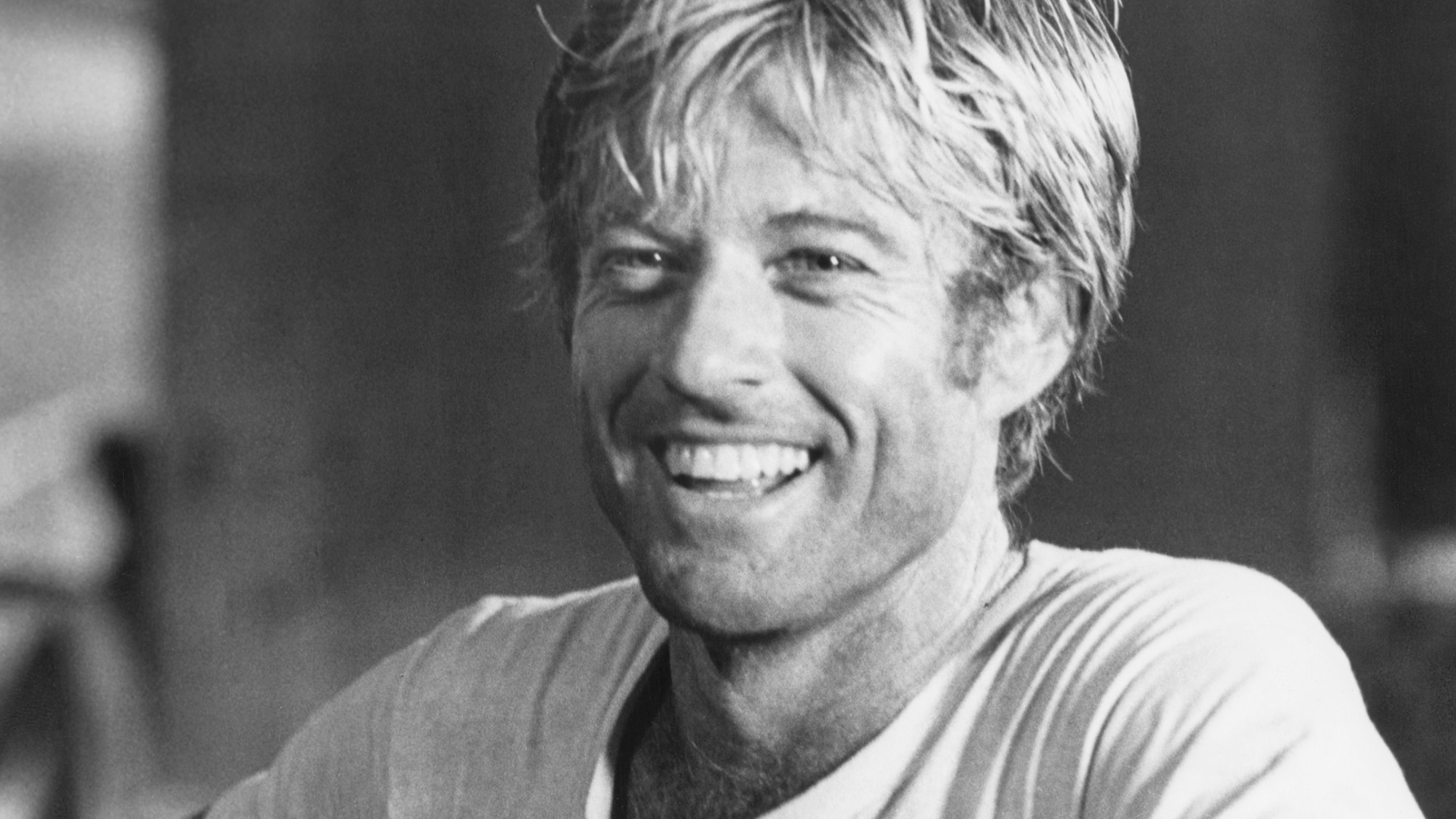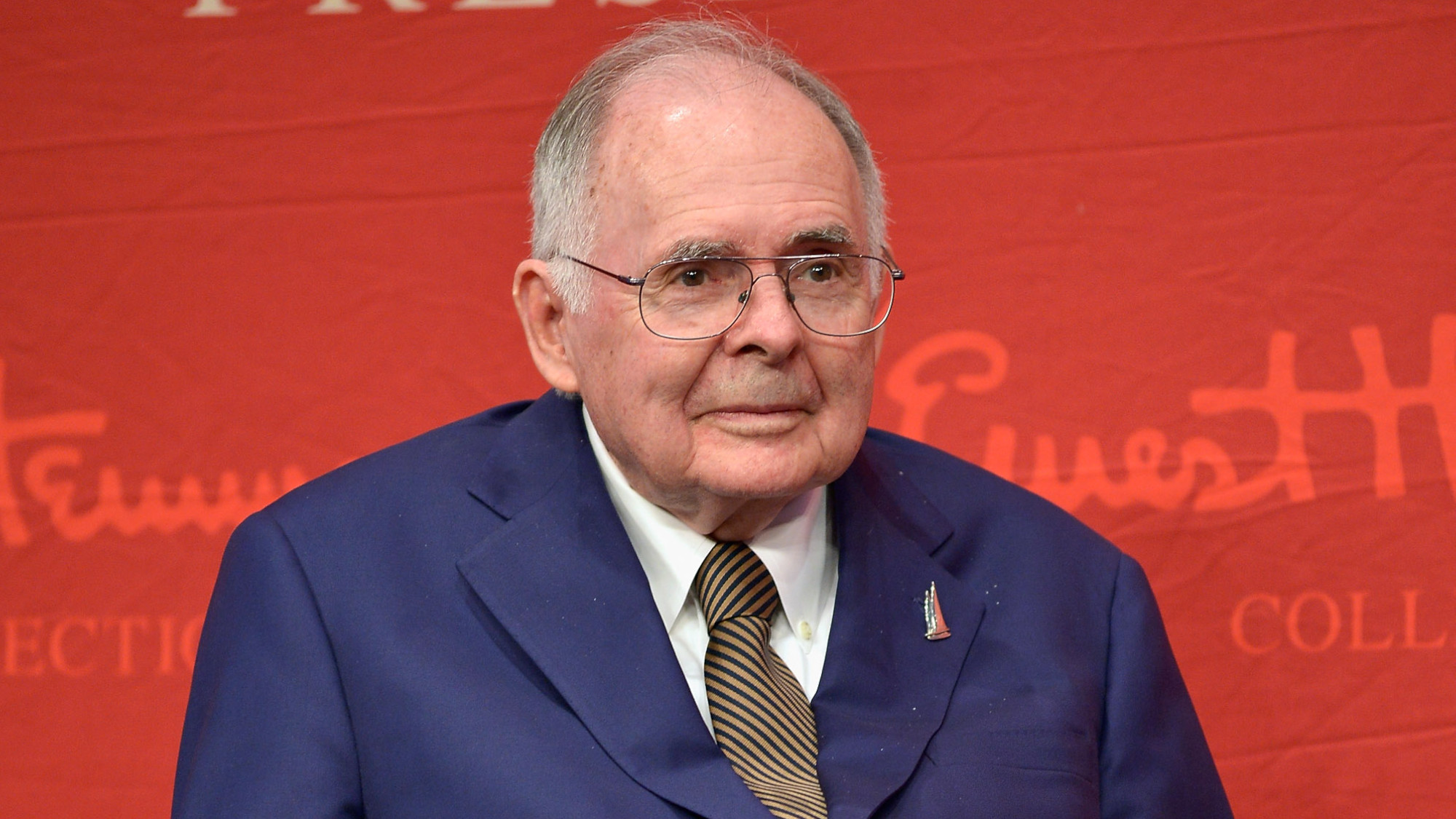William Safire
The provocative political columnist who loved language
William Safire
1929–2009
William Safire’s 1973 appointment as an op-ed columnist for The New York Times sparked chagrin across the political spectrum. Liberals were furious that the Times had hired a former speechwriter for Richard Nixon, while conservatives were shocked that he had gone over to the enemy. But over the course of 32 years and in more than 3,000 columns, Safire’s blend of muscular opinion, elegant language, and tart iconoclasm made him one of America’s most respected pundits.
The Week
Escape your echo chamber. Get the facts behind the news, plus analysis from multiple perspectives.

Sign up for The Week's Free Newsletters
From our morning news briefing to a weekly Good News Newsletter, get the best of The Week delivered directly to your inbox.
From our morning news briefing to a weekly Good News Newsletter, get the best of The Week delivered directly to your inbox.
A New York City native and Syracuse University dropout, Safire became a legman for New York Herald Tribune columnist Tex McCrary at 19, said The Washington Post. He later joined McCrary’s public relations firm, “whose clients included the construction company that built the ‘typical American house’ for the American National Exhibition in Moscow.” It was into this exhibit’s kitchen, in 1959, that Safire corralled Vice President Nixon and Soviet leader Nikita Khrushchev, allowing Nixon to instigate “the famous ‘kitchen debate’ on the relative merits of capitalism and communism.” After running his own PR firm, with clients ranging “from Good Humor to Ex-Lax,” Safire joined Nixon’s White House speechwriting staff in 1968. He soon coined such memorable terms as “nattering nabobs of negativism” and “hopeless, hysterical hypochondriacs of history” for Vice President Spiro Agnew to use against critics.
Safire brought that punchiness to his Times essays, said the Associated Press. In contrast to the Olympian tone of many columnists, he employed a style that one observer compared to “a gaudy flame on display in a gray museum.” He called Hillary Clinton “a congenital liar” and once urged Ronald Reagan to “dispense with his I-am-not-a-shnook defensiveness.” His “smooth prose helped make conservatism respectable in the 1970s” and won him the 1978 Pulitzer Prize for commentary. But “critics said Safire made loose accusations” that were not always borne out by the facts. Several times he linked Saddam Hussein to the 9/11 attacks, “calling it an ‘undisputed fact’ that hijacker Mohamed Atta met with a senior Iraqi intelligence official in Prague in April 2001. The 9/11 commission said that meeting never happened.”
The frequently “rumpled” Safire often looked “like a man with a toothache coming on,” said The New York Times. A self-described “libertarian conservative” who prized individual freedom and deplored governmental intrusion, he was famously contrarian. “He denounced the Bush administration’s USA Patriot Act as an intrusion on civil liberties, for example, but supported the war in Iraq.” In his “On Language” column, which ran for 30 years in The New York Times Magazine, he plumbed the depths of the mother tongue, earning fame as a “Pickwickian quibbler who gleefully pounced on gaffes, inexactitudes, neologisms, misnomers, solecisms, and perversely peccant puns.” Among his many wry rules for writers were, “Remember to never split an infinitive. Take the bull by the hand and avoid mixing metaphors. Proofread carefully to see if you words out. Avoid clichés like the plague. And don’t overuse exclamation marks!”
Safire’s many honors included the 2006 Presidential Medal of Freedom. He died of pancreatic cancer.
A free daily email with the biggest news stories of the day – and the best features from TheWeek.com
-
 The rise of runcations
The rise of runcationsThe Week Recommends Lace up your running shoes and hit the trails on your next holiday
-
 Amorim follows Maresca out of Premier League after ‘awful’ season
Amorim follows Maresca out of Premier League after ‘awful’ seasonIn the Spotlight Manchester United head coach sacked after dismal results and outburst against leadership, echoing comments by Chelsea boss when he quit last week
-
 ‘Jumping genes': How polar bears are rewiring their DNA to survive the warming Arctic
‘Jumping genes': How polar bears are rewiring their DNA to survive the warming ArcticUnder the radar The species is adapting to warmer temperatures
-
 Joanna Trollope: novelist who had a No. 1 bestseller with The Rector’s Wife
Joanna Trollope: novelist who had a No. 1 bestseller with The Rector’s WifeIn the Spotlight Trollope found fame with intelligent novels about the dramas and dilemmas of modern women
-
 Frank Gehry: the architect who made buildings flow like water
Frank Gehry: the architect who made buildings flow like waterFeature The revered building master died at the age of 96
-
 R&B singer D’Angelo
R&B singer D’AngeloFeature A reclusive visionary who transformed the genre
-
 Kiss guitarist Ace Frehley
Kiss guitarist Ace FrehleyFeature The rocker who shot fireworks from his guitar
-
 Robert Redford: the Hollywood icon who founded the Sundance Film Festival
Robert Redford: the Hollywood icon who founded the Sundance Film FestivalFeature Redford’s most lasting influence may have been as the man who ‘invigorated American independent cinema’ through Sundance
-
 Patrick Hemingway: The Hemingway son who tended to his father’s legacy
Patrick Hemingway: The Hemingway son who tended to his father’s legacyFeature He was comfortable in the shadow of his famous father, Ernest Hemingway
-
 Giorgio Armani obituary: designer revolutionised the business of fashion
Giorgio Armani obituary: designer revolutionised the business of fashionIn the Spotlight ‘King Giorgio’ came from humble beginnings to become a titan of the fashion industry and redefine 20th-century clothing
-
 Ozzy Osbourne obituary: heavy metal wildman and lovable reality TV dad
Ozzy Osbourne obituary: heavy metal wildman and lovable reality TV dadIn the Spotlight For Osbourne, metal was 'not the music of hell but rather the music of Earth, not a fantasy but a survival guide'